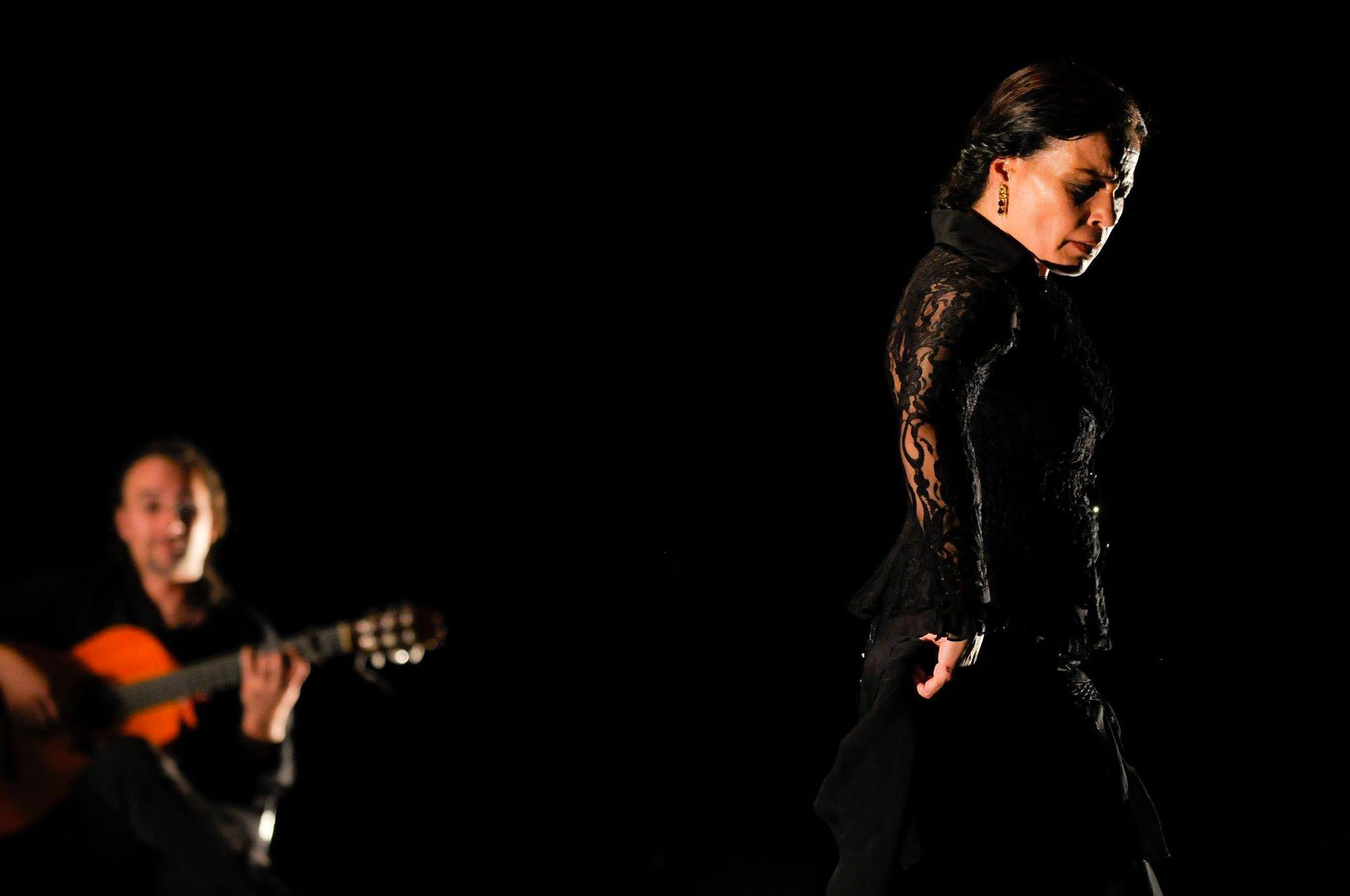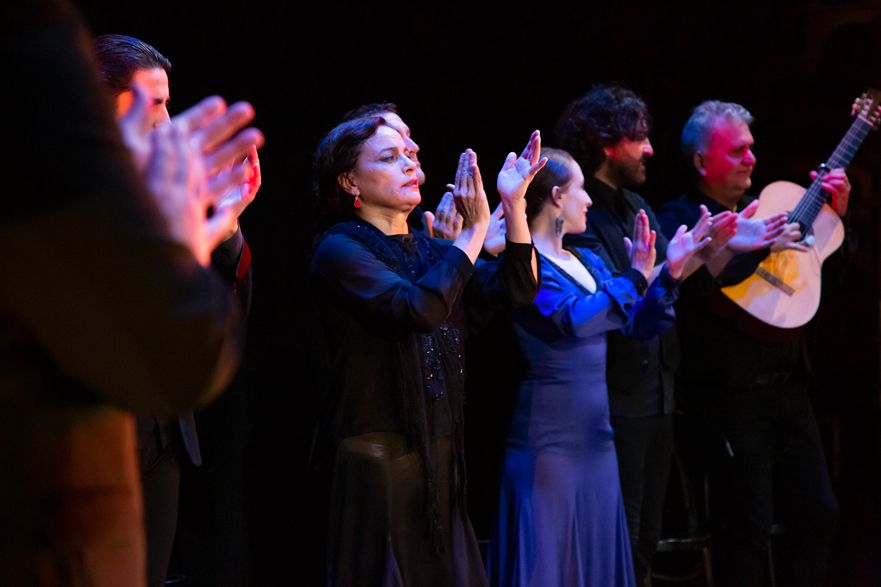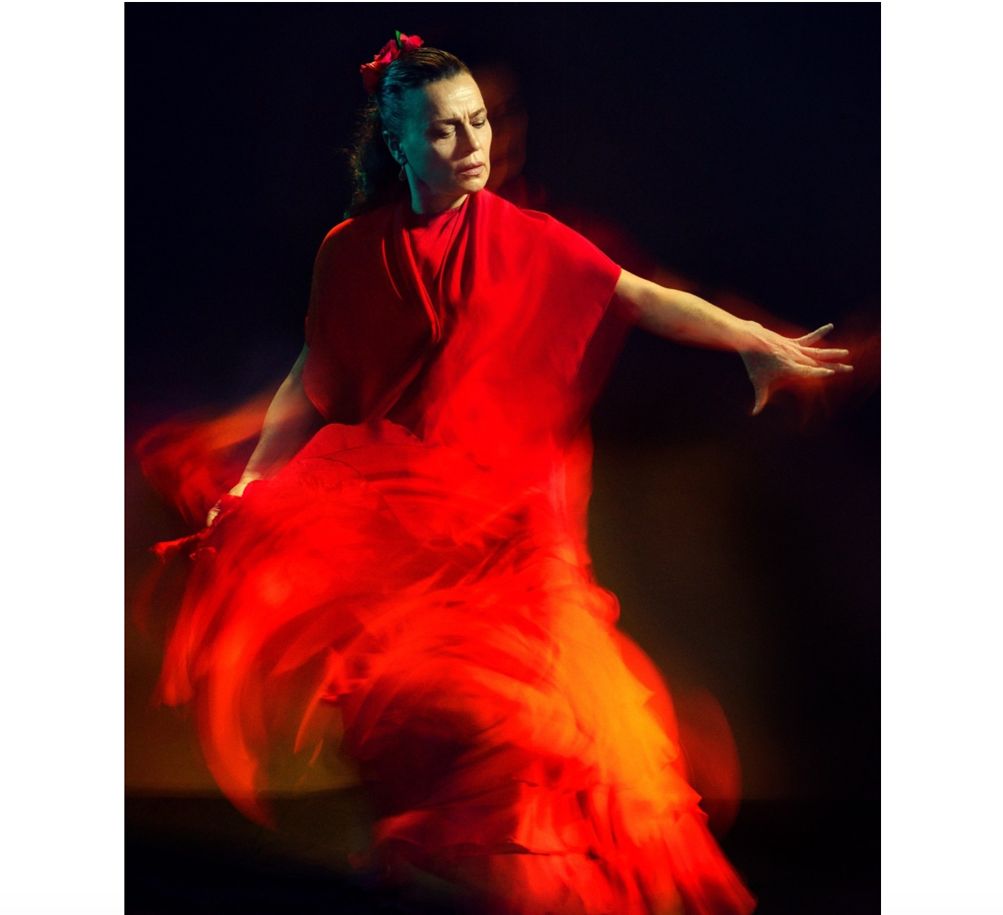First condemned, then admired, flamenco has enthralled us for centuries. Today, the riveting performances of Noche Flamenca continue the spell.
Although it originated in Spain in the southern region of Andalusia, flamenco draws from many different influences. The persecuted Roma people, who migrated from northwest India between the 9th and 14th centuries, encountered in Spain the also displaced Sephardic Jews and Arabs, as well as Africans and Caribbeans. From this meeting of cultures, the art form known as flamenco was born.

Reviled by the Spanish elite because of the marginalized ethnic communities that practiced it, flamenco didn’t become a symbol of Spanish culture until artists early in the 20th century, such as writer and poet Federico García Lorca, deemed it so. Almost a century later in 2010, UNESCO inscribed it as part of the Intangible Cultural Heritage of Humanity.
The flamenco dance travels in extremes — movements being fluid yet precise, delicate yet strong, sensual yet restrained. Shifting from a soft raise of the arms and turn of the wrists, to a forceful combination of footwork and heelwork.

When talking about flamenco, many people will think of the dance alone. However, this art form is in reality composed of several other elements. The music, generally featuring a guitar, can be accompanied with the percussion of a box (cajón), castanets, hand clapping, and a very specific style of singing. In the manner of a lament, the singer (cantaor) will stretch the words into a continuum of sounds that convey a sense of anguish or demand.
Noche Flamenca is a flamenco company founded in 1993 by husband and wife Martín Santagelo and Soledad Barrio, both born in Spain but currently based in New York. The company performs regularly at places like the Lincoln Center and the Joyce Theater in New York City, as well as in tours all over the world. On top of performing, they aim to educate others about the tradition of flamenco through classes and residency programs, which are in line with the United Nations Sustainable Development Goal of Sustainable Cities and Communities.
Soledad Barrio is not only the co-founder, but the principal dancer of Noche Flamenca. Enamored with dancing since the age of four, Barrio took up flamenco at the age of nineteen after watching the movie Blood Weddings (Bodas de Sangre) by director Carlos Saura. In the movie, a company of flamenco dancers enact a play by García Lorca.
“Flamenco chose me. When I started to dance, it was like my second birth,” Barrio declared.

Famous for her passionate and emotional performances, Barrio has received a number of awards, more recently the 2022 Vilcek Prize in Dance.
“Just as Baryshnikov did with ballet, Barrio has transformed the genre of flamenco with new life and energy, attracting new audiences and inspiring dancers and choreographers over the world,” said Marica Vilcek, Cofounder, Vice Chairman and Secretary of the Vilcek Foundation.
Flamenco feels like an act of rebellion against detractors and persecutors, but also an act of communion and outpouring of the deepest human emotions. An art form not to be missed, for words could never do it justice.
Find out more about Noche Flamenca on their website, where you can also keep track of their upcoming shows. They have been recently forced to postpone them due to the surge of the Omicron variant of COVID-19, but they have a few performances you can check out online. If you wish to support them, you can also donate here!
